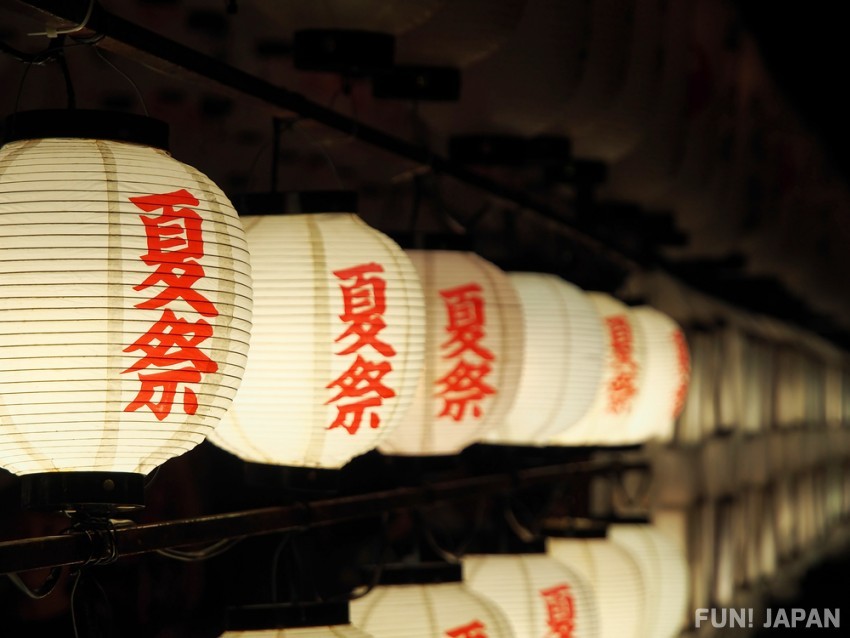
Throughout the year and across all seasons, Japan hosts a huge variety of festivals and events, totaling approximately 300,000 annually. While each shrine holds its own unique festivals, the general themes follow the seasons—spring festivals often pray for good harvests, summer ones for protection from pests, autumn festivals express gratitude for crops, and winter events are spent indoors waiting for spring’s arrival.
Among these, summer festivals and fireworks displays are iconic elements of Japanese summer. Most take place between early July and late August. Each festival has its own unique features and highlights, so joining a festival can be one of the best ways to experience Japanese culture.
*By purchasing or reserving products introduced in this article, a portion of the sales may be returned to FUN! JAPAN.
How Many Famous Summer Festivals Are There in Japan?
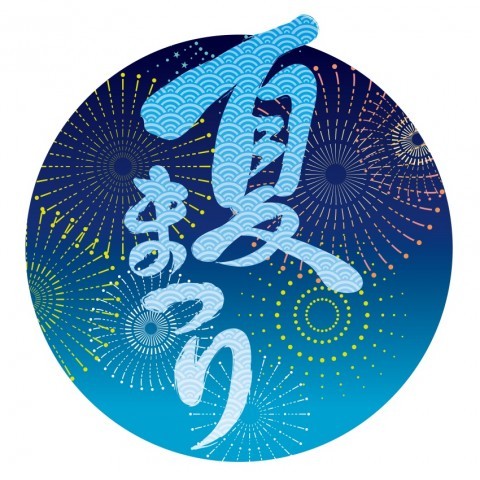
When people think of traditional Japanese culture, images of shrines, yukata (summer kimono), food stalls, and fireworks probably come to mind. The festivals held across Japan from July to August are known as "summer festivals", and they’re a major highlight of the season for both locals and international visitors. If you’re interested in joining a Japanese festival but don’t know where to go or how to enjoy it, start by checking out some of the most famous ones below.
Japan’s Three Great Festivals
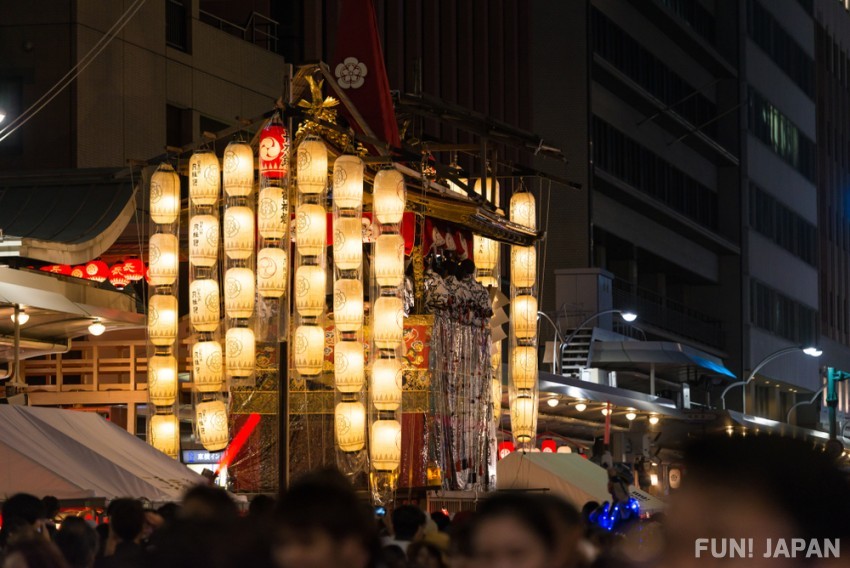
Among the many festivals across Japan, three are especially famous and considered the most representative of traditional Japanese festivals.
【Kyoto】Yasaka Shrine: Gion Matsuri
History of Gion Matsuri
Gion Matsuri began in 869 during the Heian period as a ritual to stop a plague in Kyoto. Over time, townspeople became involved, decorating enormous festival floats that paraded through the streets. This developed into a vibrant event and has since become one of Kyoto’s most iconic summer festivals. Even today, it continues as a traditional ceremony praying for protection from disease and for the prosperity of the town.
Festival Events and Highlights of Gion Matsuri
Gion Matsuri is the annual festival of Yasaka Shrine and runs for an entire month from July 1 to 31 each year. The "Yoiyama" pre-festival nights are filled with food stalls and glowing lanterns, bringing the city to life. The highlight is the "Yamaboko Junko" float processions on July 17 and 23. These magnificent floats, some reaching up to 25 meters high, parade through the city in a spectacular display that’s also perfect for photos. The lit-up floats at night create a magical, out-of-the-ordinary atmosphere, and the contrast between the earlier and later processions offers completely different vibes to enjoy.
- 2025 Festival Schedule: July 1 (Tue) – July 31 (Thu)
- Official Website: http://www.gionmatsuri.or.jp/
👉 Click here for more details on Gion Matsuri.
👉 【KKday】Book Kyoto Gion Matsuri & Lake Biwa Lunch Cruise Bus Tour
【Osaka】Tenmangu Shrine: Tenjin Matsuri
History of Tenjin Matsuri
Osaka’s Tenjin Matsuri is a historic festival that began in 951 during the Heian period. It’s said that the “Funatogyo” boat procession format was already established around the time Toyotomi Hideyoshi built Osaka Castle, and later, fireworks were added to the event. Today, it’s recognized as one of the "Three Great Festivals of Japan", and is a source of pride for locals as well as a major attraction for visitors.
Festival Events and Highlights of Tenjin Matsuri
Various Shinto rituals are held across the two-day celebration from July 24 to 25. On the night of the 25th, the “Funatogyo” boat procession takes place. As the sound of taiko drums and flutes echoes through the air, beautifully decorated boats sail along the Okawa River (formerly the Yodo River), and a fireworks display crowns the festival. The view of crowds lining the riverbanks and the grandeur of the mikoshi (portable shrine) on the boats is truly spectacular. The fusion of water and fire throughout the city is the festival’s most captivating feature.
- 2025 Festival Dates: July 24 (Yomiya Festival), July 25 (Main Festival)
- Official Website: https://osakatemmangu.or.jp/saijireki/tjm
👉 Click here for more details on Tenjin Matsuri
👉 【Klook】Book tickets for Tenjin Matsuri 2025 (Osaka)
【Tokyo】Kanda Myojin Shrine: Kanda Matsuri
History of Kanda Matsuri
During the Edo period, Kanda Matsuri was so large in scale it was called a "Tenka Festival" (Festival of the Realm). Backed by the Tokugawa Shogunate, it became a grand event. Although it was held annually until the Genna era, it’s now held every other year (in odd-numbered years). The festival has shifted from boat processions to mikoshi parades, but it still carries the spirit and flair of the “Edokko” (people of Edo/Tokyo).
Festival Events and Highlights
Kanda Matsuri features several key events: the Horen Mikoshi Procession, the Shinko-sai with participants in Heian-period attire parading through the streets, the playful Tsuke Matsuri costume parade, and the grand climax with hundreds of mikoshi returning to Kanda Myojin Shrine. It’s a lively and energetic celebration packed with traditional charm.
- 2025 Festival Dates: May 8 (Thu) – May 15 (Thu)
- Official Website: https://kandamatsuri.com/
👉 Click here for more details on the Kanda Festival.
Tohoku’s Three Great Festivals / Six Major Festivals
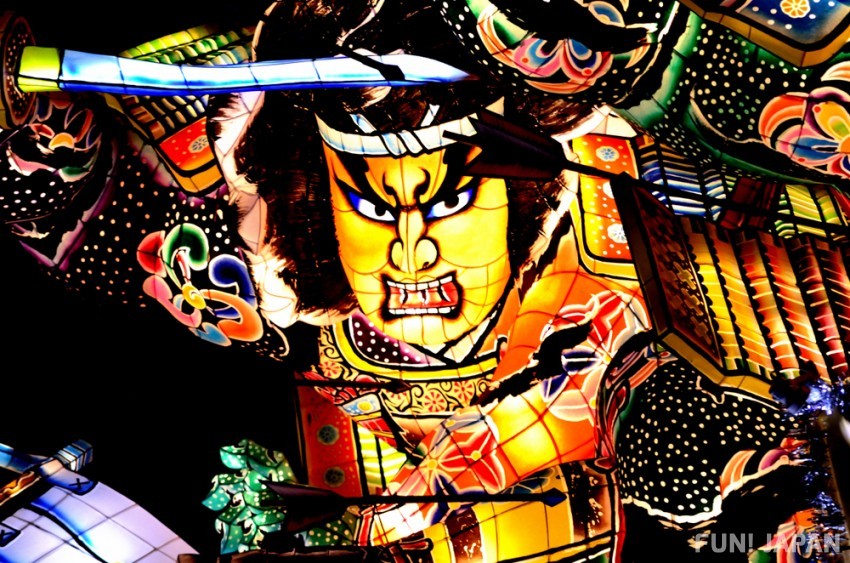
The “Three Great Festivals of Tohoku” include the Aomori Nebuta Festival, the Akita Kanto Festival, and the Sendai Tanabata Festival. All are held in summer and represent the traditional culture of the Tohoku region. After the Great East Japan Earthquake, in hopes of recovery and unity, three more were added—the Yamagata Hanagasa Festival, the Morioka Sansa Odori, and the Fukushima Waraji Festival—forming the “Rokkonsai” (Six Spirits Festival) in 2011. The word “Rokkon” symbolizes the six prefectures coming together as one.
【Aomori】Nebuta Festival
History of the Nebuta Festival
The origins of the Nebuta Festival date back to the Heian period, linked to the Tanabata custom known as “Nemuri Nagashi,” which involved casting away evil spirits into rivers or the sea. This practice evolved into parading large lantern floats through the streets. In the Edo period, it became a popular local event, and after World War II, it developed into a major tourist attraction. In 1980, it was designated an Important Intangible Folk Cultural Property of Japan and continues to attract attention both domestically and internationally as Aomori’s signature festival.
Festival Events and Highlights of the Nebuta Festival
The highlight of the Aomori Nebuta Festival is the parade of massive “nebuta” floats decorated with warrior images and other vivid scenes. Dancers called “haneto” jump and shout “Rassera!” adding excitement and rhythm to the festival. On the final night, the floats are taken out on the water and accompanied by fireworks in a spectacular finale.
- 2025 Festival Dates: August 2 (Sat) – August 7 (Thu)
- Official Website: https://www.nebuta.jp/
👉 Click here for more details on the Aomori Nebuta Festival.
👉 【KKday】Book spectator seat tickets for the Aomori Nebuta Festival
👉 【Klook】Book a day trip from Sendai to the Aomori Nebuta Festival (night viewing, private vehicle, reserved seating)
【Miyagi】Sendai Tanabata Festival
History of the Sendai Tanabata Festival
This festival dates back to the time of Date Masamune (1567–1636) and took root as an event wishing for women’s improvement in skills like literature and sewing. After World War II, large-scale decorations centered around shopping arcades began as a symbol of recovery for the people of Sendai, eventually developing into a citywide event.
Festival Events and Highlights of the Sendai Tanabata Festival
Colorful decorations such as paper balls, streamers, and paper cranes hang from the arcade ceilings, creating a stunning visual experience. They shine brilliantly in the daylight and glow enchantingly at night when illuminated. These decorations are handmade and entered into the “T-1 Grand Prix” Tanabata Decoration Contest, where their craftsmanship is evaluated—another highlight of the festival.
- 2025 Festival Dates: August 6 (Wed) – August 8 (Fri)
- Official Website: https://www.sendaitanabata.com/
👉 Click here for more details on the Sendai Tanabata Festival.
【Akita】Akita Kanto Festival
History of the Akita Kanto Festival
"Neburi Nagashi," a traditional event where long bamboo poles decorated with many lanterns called "kanto" are paraded through the streets, was originally held to ward off evil spirits and pray for a good harvest in the peak of summer. The kanto are designed to resemble rice stalks, and the lanterns hanging from them mimic sacks of rice. The sight of these swaying lanterns against the summer night sky is truly enchanting. In 1980, it was designated as an Important Intangible Folk Cultural Property of Japan and has become a symbol of summer in Akita City, drawing many visitors from both within and outside the prefecture.
Festival Events and Highlights of the Akita Kanto Festival
The highlight of the festival is the display of skill where performers balance kanto that can be up to 12 meters long and weigh as much as 50 kg on their foreheads, shoulders, or hips. During the day, competitions are held to showcase these balancing techniques, while in the evening, the main parade takes place with glowing lanterns creating a dreamlike atmosphere. The impressive skills and the beauty of the illuminated night procession captivate the audience.
- 2025 Festival Dates: August 3 (Sun) – August 6 (Wed)
- Official Website: https://www.kantou.gr.jp/
👉 Click here for more details on the Akita Kanto Festival
👉 【KKday】Book guided night parade reserved seats for the Akita Kanto Festival
【Yamagata】Yamagata Hanagasa Festival
History of Yamagata Hanagasa Festival
The festival began in 1963 as part of the "Zao Summer Festival" and later evolved into its own independent event. The Hanagasa dance was showcased at the 1970 Osaka Expo, gaining nationwide recognition. As participation from citizens and schools increased, the event transformed into a community-driven festival and is now one of the most prominent summer festivals in the Tohoku region.
Festival Events and Highlights of Yamagata Hanagasa Festival
Around 10,000 dancers parade with flower hats (hanagasa) in hand, chanting "Yassho, Makasho!" The coordinated movements of dancers in yukata (summer kimono) are both beautiful and powerful. The unified formations of the groups are a sight to behold. There’s also a popular “walk-in” corner where spectators can join in the dance, making it a festival that everyone can take part in.
- 2025 Festival Dates: August 5 (Tue) – August 7 (Thu)
- Official Website: https://www.hanagasa.jp/
👉 Click here for a detailed introduction to the Yamagata Hanagasa Festival.
【Iwate】Morioka Sansa Odori
History of Morioka Sansa Odori
The origin of the festival is said to come from the demon-banishing legend of Mitsuishi Shrine. It began as a traditional dance ritual for driving away evil spirits and praying for a good harvest. In 2014, it was recognized by the Guinness World Records for the “world’s largest simultaneous taiko drum performance” and is known today as a festival that continues the region’s rich cultural traditions.
Festival Events and Highlights of Morioka Sansa Odori
The greatest appeal of the festival lies in its powerful group dance, with drums, flutes, and dancers moving in perfect harmony. The unified lines of performers and their energetic chants of "Sakkora Choiwasse" echo through the streets, creating a breathtaking performance. Spectators are also welcome to join in, making it a participatory festival full of collective energy.
- 2025 Festival Dates: August 1 (Fri) – August 4 (Mon)
- Official Website: https://sansaodori.jp/
👉 【KKday】Book reserved seats & walking tour for Morioka Sansa Odori
【Fukushima】Fukushima Waraji Festival
History of the Fukushima Waraji Festival
The festival is said to have originated from the winter ritual "Akatsuki Mairi" at Haguro Shrine, which has been passed down for about 400 years. It’s a summer tradition of Fukushima City, where a giant straw sandal (waraji) is carried through the streets to pray for good health and regional prosperity. In 2019, the Waraji dance and its accompanying music were updated, giving the festival a new and modern feel.
Festival Events and Highlights of the Fukushima Waraji Festival
A massive 12-meter-long, 2-ton straw sandal is carried by coordinated teams of participants. The powerful scene of the procession, accompanied by energetic chants, fills the streets with excitement. At night, illuminated displays add a magical touch to the atmosphere.
- 2025 Festival Dates: August 1 (Fri) – August 3 (Sun)
- Official Website: https://www.waraji.co.jp/
👉 【Klook】Book spectator seats for Japan’s largest waraji parade: Fukushima Waraji Festival
Edo’s Three Great Festivals
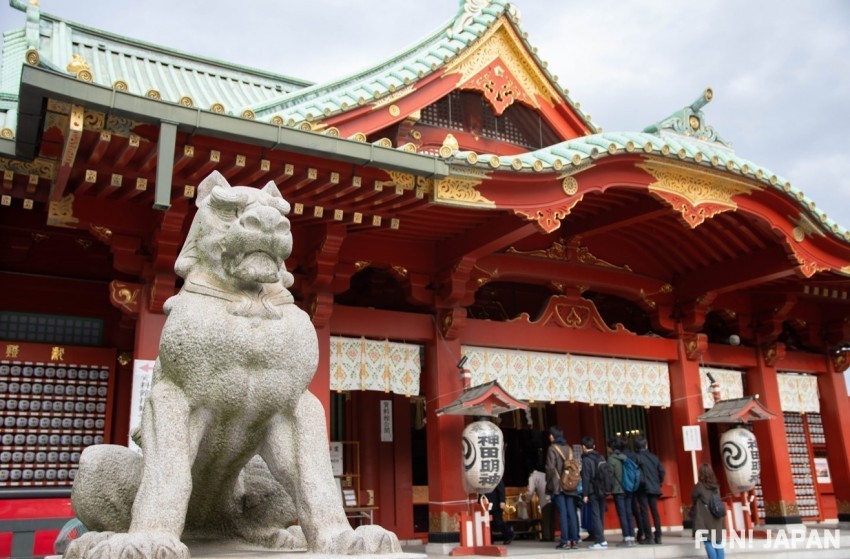
The term "Edo’s Three Great Festivals" refers to the three most famous and iconic festivals held in Edo (now Tokyo). These include "Kanda Matsuri" at Kanda Myojin Shrine, "Sanno Matsuri" at Hie Shrine, and "Fukagawa Matsuri" at Tomioka Hachimangu Shrine.
【Tokyo】Kanda Myojin Shrine: Kanda Matsuri
Please refer to the earlier section on the "Three Great Festivals of Japan" above.
【Tokyo】Tomioka Hachimangu Shrine: Fukagawa Hachiman Festival (Tomioka Hachimangu Grand Festival)
History of the Fukagawa Hachiman Festival
The origin of the Fukagawa Hachiman Festival dates back to 1642, when it was held as a celebration of the young Shogun Tokugawa Ietsuna’s growth. From the following year, the mikoshi (portable shrine) processions began to parade through the streets of Edo. Alongside the Kanda and Sanno Festivals, it came to be known as one of Edo’s Three Great Festivals and gained fame for its powerful mikoshi parades. In the main festival, which occurs once every three years, the grand phoenix mikoshi (hōren) makes a procession, and an impressive total of 53 large mikoshi (and 120 in total including small ones) parade in unison. This display of pride and unity continues today as a symbol of the "Edokko" (children of Edo) spirit.
Festival Events and Highlights of the Fukagawa Hachiman Festival
During the "Joint Mikoshi Procession," 53 neighborhood mikoshi march for about 8 km through the streets of Fukagawa, while water is splashed on the carriers from the roadside in the traditional "Mizukake" (water splashing) to cool them down. On the day before the main festival, the phoenix mikoshi procession is held, and throughout the period, there are traditional performing arts, children’s mikoshi, and food stalls, creating a vibrant and participatory atmosphere unique to Tokyo’s shitamachi (old downtown) area.
- 2025 Festival Dates: August 13 (Wed) – August 17 (Sun) *The next main festival will be held in 2026
- Official Website: https://www.baynet.ne.jp/fukagawamatsuri/
【Tokyo】Hie Shrine: Sanno Matsuri
History of the Sanno Festival
Sanno Matsuri is held at Hie Shrine in Chiyoda Ward and, together with Kanda Matsuri, is also referred to as one of the "Tenka Festivals" (Festivals of the Realm). The festival’s origins date back to the Muromachi period. After Tokugawa Ieyasu entered Edo, it became an important event to protect Edo Castle. Even today, the "Shinko-sai" procession held every two years features gorgeous floats and mikoshi parading through central Tokyo, continuing a tradition rich in history.
Festival Events and Highlights of the Sanno Festival
During the biennial Shinko-sai, mikoshi and floats make their way through the heart of Tokyo, including around the Imperial Palace, Nihonbashi, and Ginza. The sight of the procession, with participants dressed in traditional court attire, creates the feeling of stepping back in time and captivates many visitors. Ritual performances are also held at the shrine, offering a great opportunity to experience traditional Japanese performing arts.
- 2025 Festival Dates: June 7 (Sat) – June 17 (Tue)
- Official Website: https://www.tenkamatsuri.jp/
There are also many other historically significant and iconic festivals across Japan, such as the "Ubakami Daijingu Togyo-sai" in Hokkaido, the "Kiryu Yagibushi Festival" in Gunma Prefecture, and the "Awa Odori" in Tokushima Prefecture. When participating in festivals, combining them with sightseeing in the area will help you experience Japan even more deeply.
Food Stalls Are a Must at Japanese Festivals!
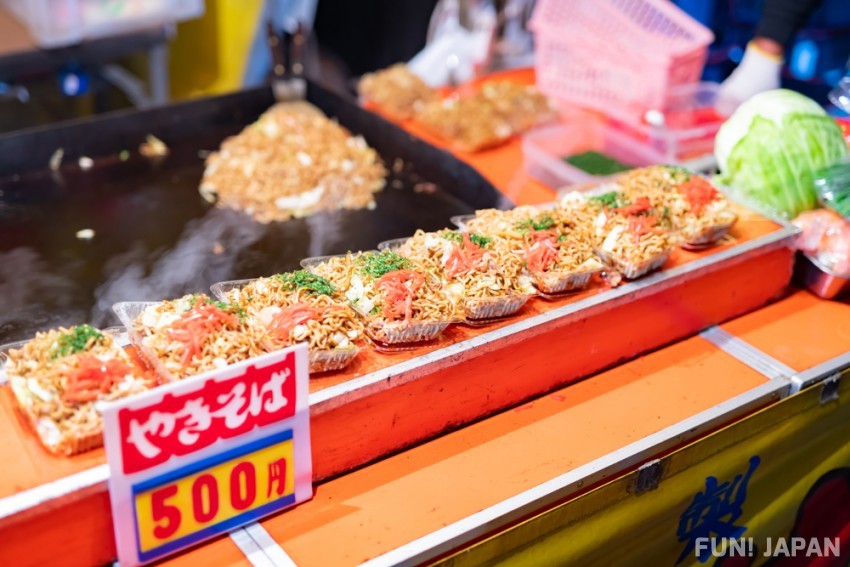
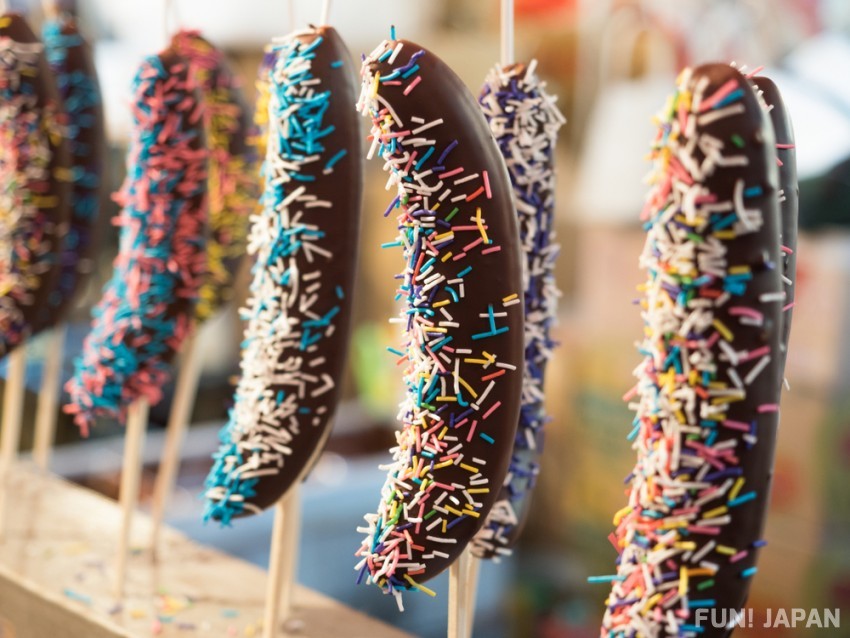
When it comes to festivals, one thing that cannot be missed is the "yatai" (food stalls). These stalls offer a wide variety of local treats, with classics like takoyaki, chocolate-covered bananas, and yakisoba being especially popular. For many Asian visitors, Japanese food stalls may resemble night markets, but Japanese festivals usually only last for two or three days once a year. That means food stalls only operate during the festival period, so if you spot one during your trip, make sure to stop by.
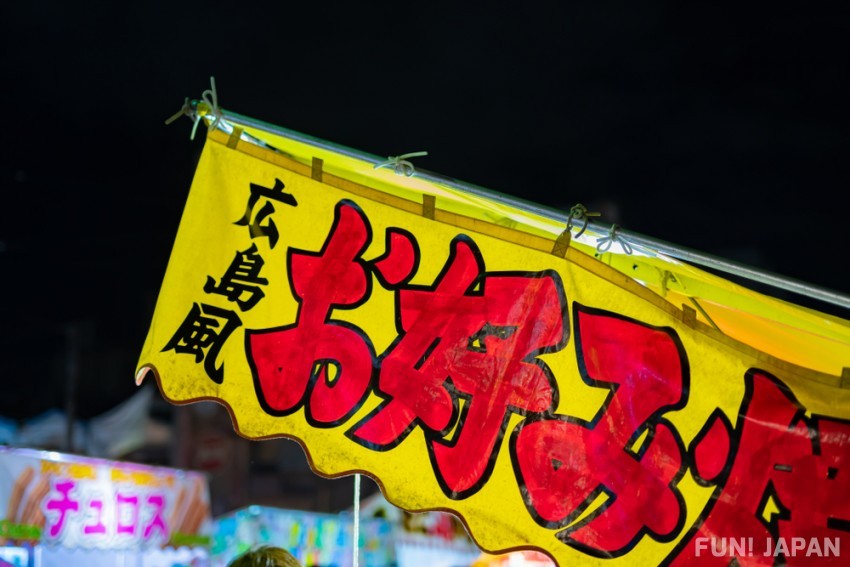
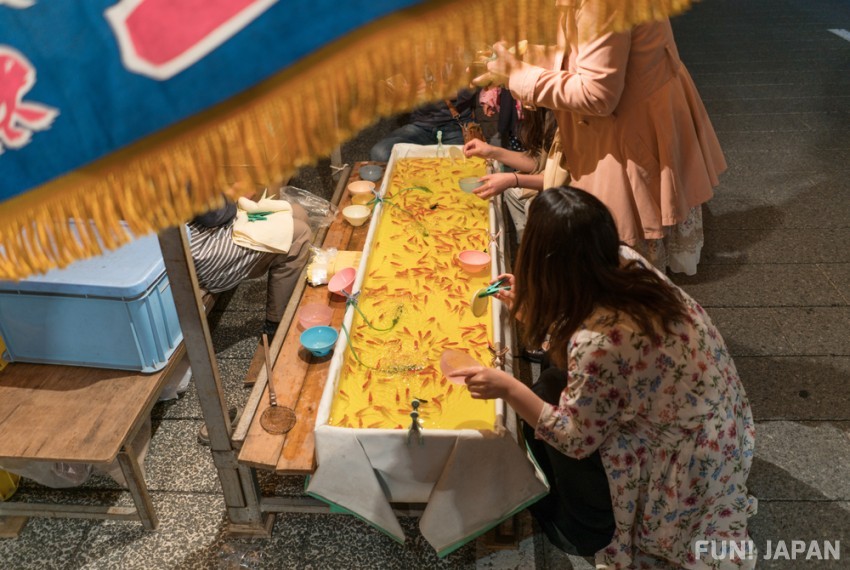
Japanese food stalls are typically mobile and set up easily, often decorated with colorful flags and banners to enhance the festive mood. You can enjoy light snacks or try out mini-games like goldfish scooping, shooting galleries, or superball scooping—there are many fun ways to enjoy them.
By the way, while eating while walking is common in many Asian night markets, some places in Japan prohibit this practice. Even outside of festivals, the local custom is to stand still and finish your food before moving on. When traveling in Japan, it’s important to check the local rules first!
Wear a Yukata to a Festival and Experience Authentic Japanese Culture
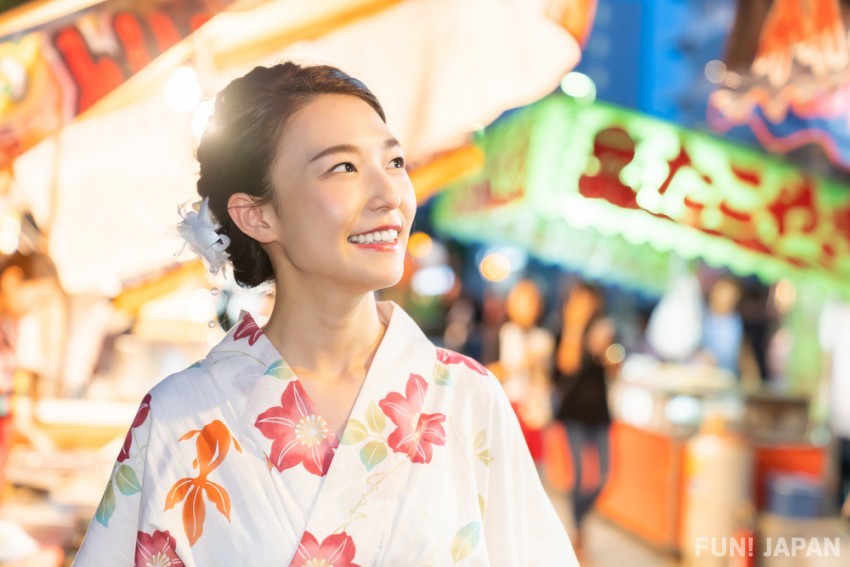
At Japanese festivals and fireworks displays, it’s common to see women in cute yukata walking through the streets. Compared to kimono, yukata are easier to wear and more casual, making them perfect for summer events. From May to June every year, Japan enters its "yukata season," and department stores and shopping malls start offering special yukata sections in preparation for summer.
Many kimono rental shops also switch to yukata plans around this time. It’s becoming increasingly popular for international travelers to rent yukata at tourist spots and enjoy strolling or taking photos while wearing them.
If you’ve come all the way to Japan, why not try wearing a yukata and joining a festival? It’s a great way to experience authentic Japanese culture even more deeply!
👉 【KKday】Book the Asakusa Kimono Rental Ya-e Yukata Plan (includes dressing and hairstyling)
👉 【KKday】Book a Yukata Rental Plan in Osaka with next-day return and dressing included
👉 【KKday】Book a Kimono/Yukata Rental Pair Plan just one minute from Kyoto Station
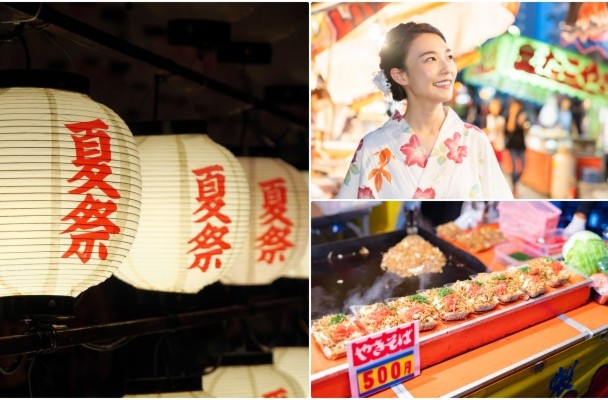
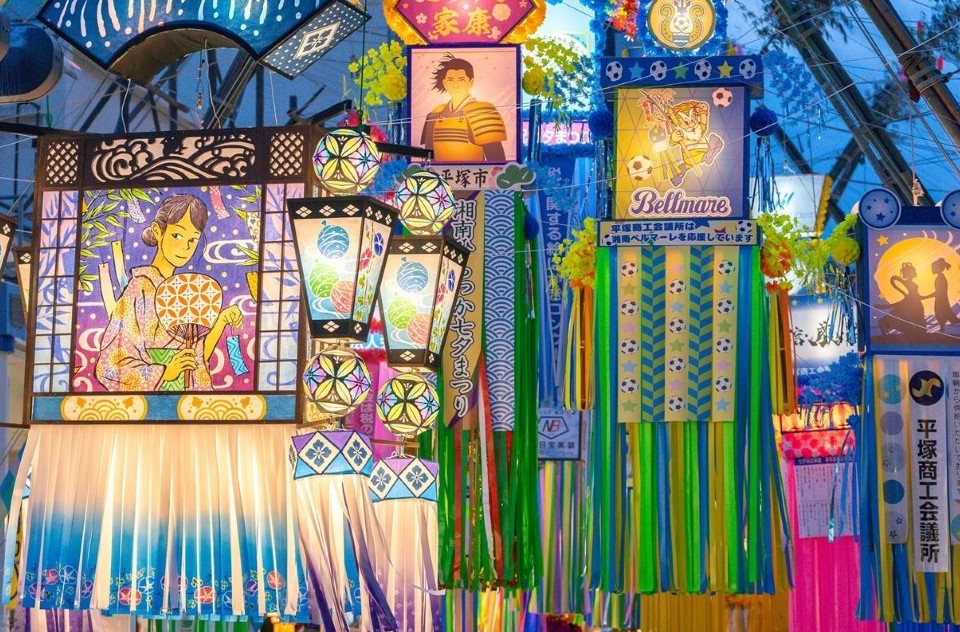
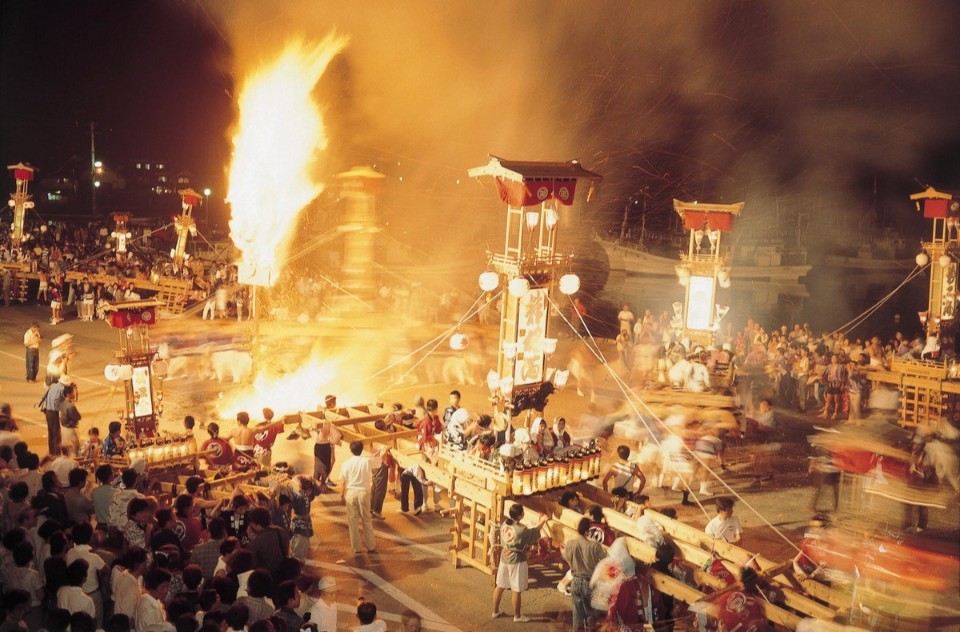
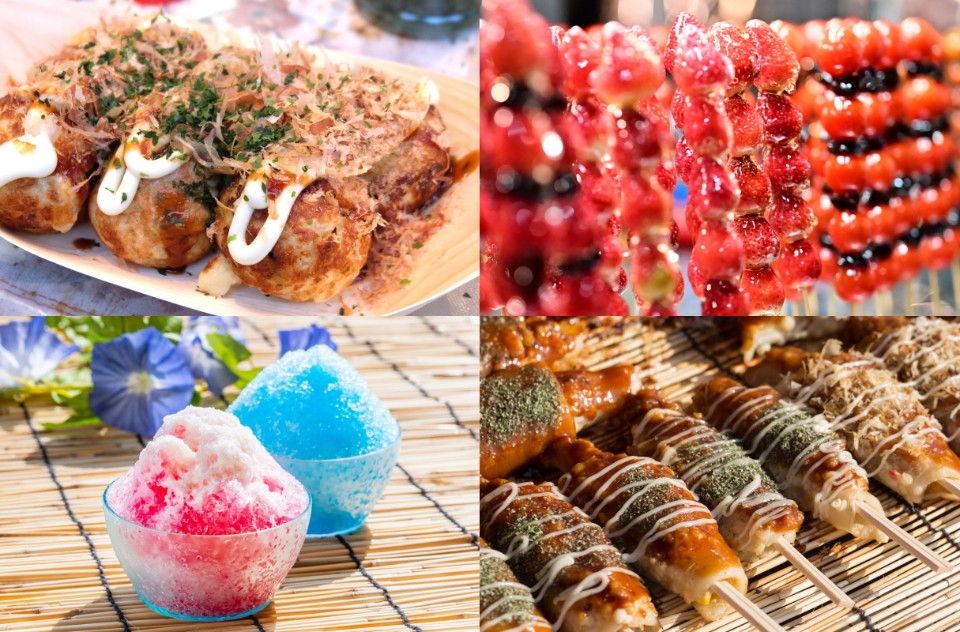
Comments